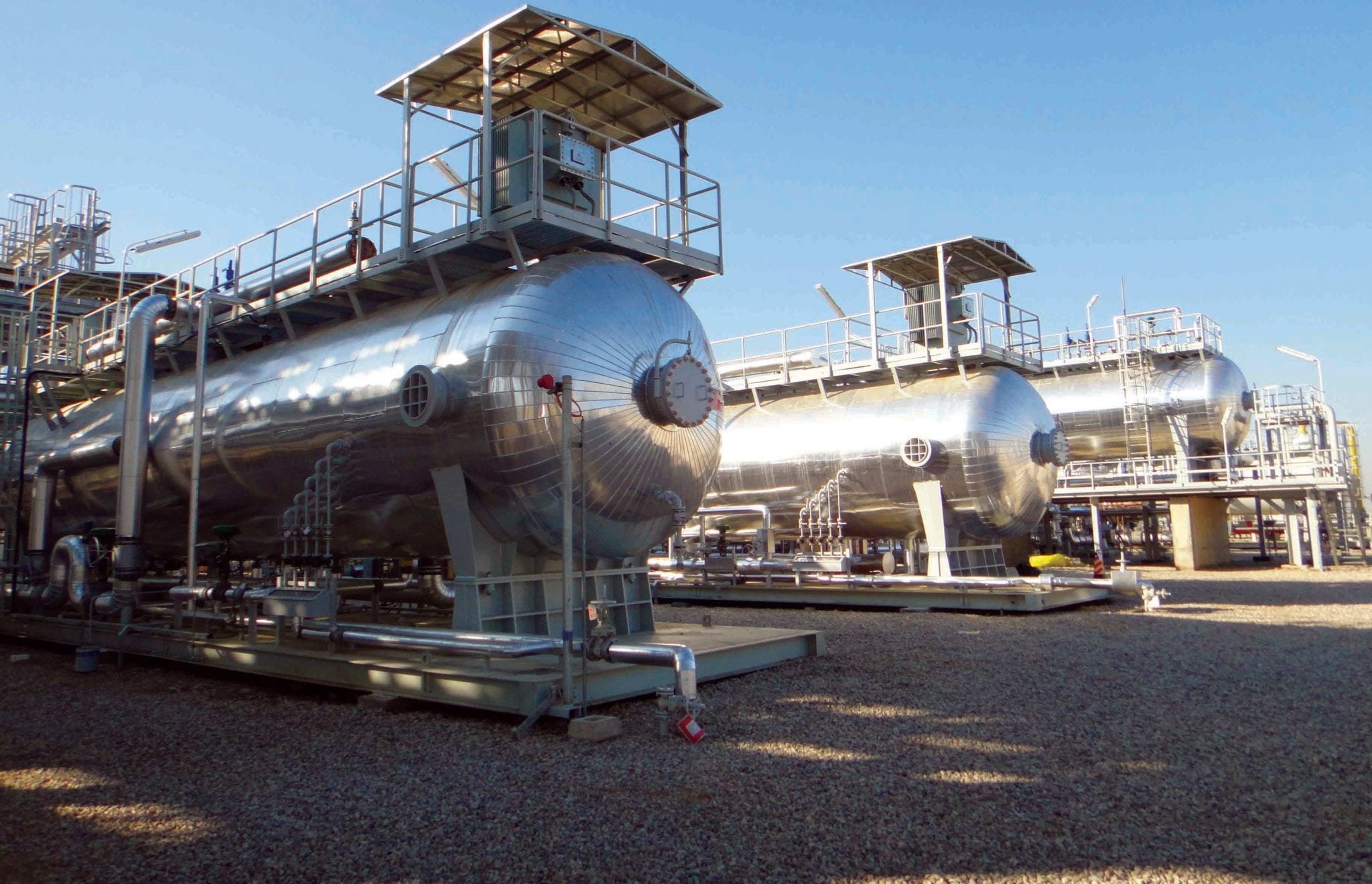Desalting can be performed in a single stage or in two stages, depending on the requirements of the refinery. Dehydration efficiency of a desalter is usually 95% in a single stage and up to 99% in two stages.
If mixing is good, dehydration efficiency can be compared with desalting efficiency, as most of the salt passed from the organic phase is passed into the water phase. In actual operation, water and oil are preheated and mixed in a 1:20 ratio.
It is common that a demulsifier substance is also added, usually 0.005 to 0.01 lb/barrel. Mixture takes place in a mixing device, which is commonly a valve with a 5 to 20 psi pressure drop.
It has been observed that good mixing allows for appropriate salt removal from oil. During mixing, salt content in oil is washed with the water and a W/O emulsion is formed.
The emulsion then enters the desalter where it is subject to the action of an intense electric field. Voltage within the desalter is 16,000 to 30,000 volts AC. Such a high voltage provides the coalescing force, whereas electric current has no participation on this effect.
Crude oils that are highly conductive require more power to achieve coalescence. The reason for this is, that in order to reach the necessary voltage gradient a higher electric current is needed and therefore a higher power consumption is required.
Operating temperatures between 95°C and 150°C are usually used to increase the settling rate because the variables involved in defining it are highly dependent on temperature. This means that setting temperature to an appropriate value is vital to ensure correct operation of a desalting unit.
In the case of heavy crude oils, setting temperature is especially important as high viscosity reduces the settling rate considerably.



